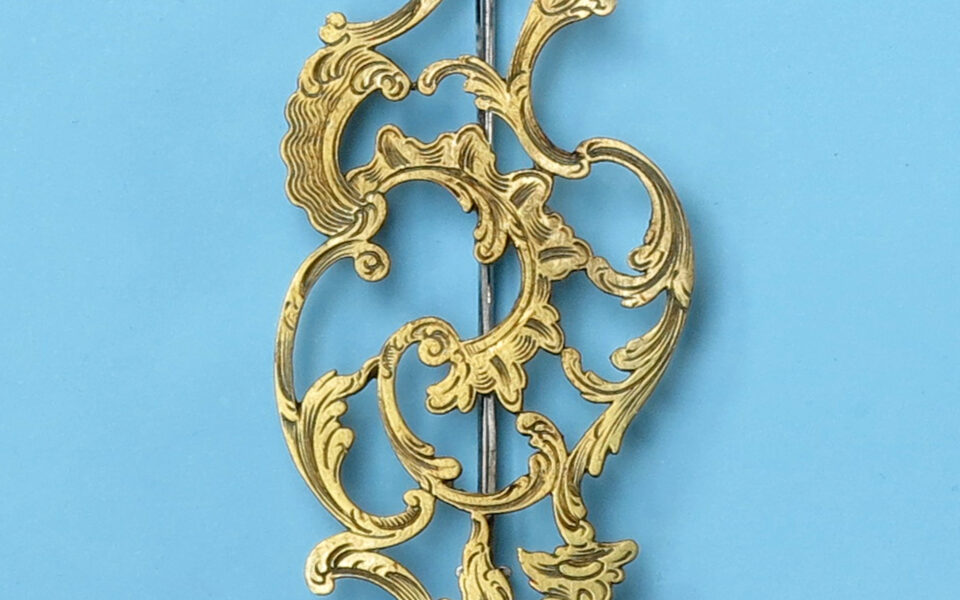
A Refined Goldsmith Scale
This rare and extraordinarily elegant measuring instrument stands out for its the exclusive fineness: a precision scale with moulded steel shears, steel equal arms beam with swan neck finials; circular embossed silver plate pans are hung to the beam through stirrup shaped silver threads; an elegant cover plate to the shears in finely pierced, engraved and gilded brass, showing a typical and elegant rococo design, encloses a circular quadrant highlighting a very subtitle steel needle-shaped pointer.
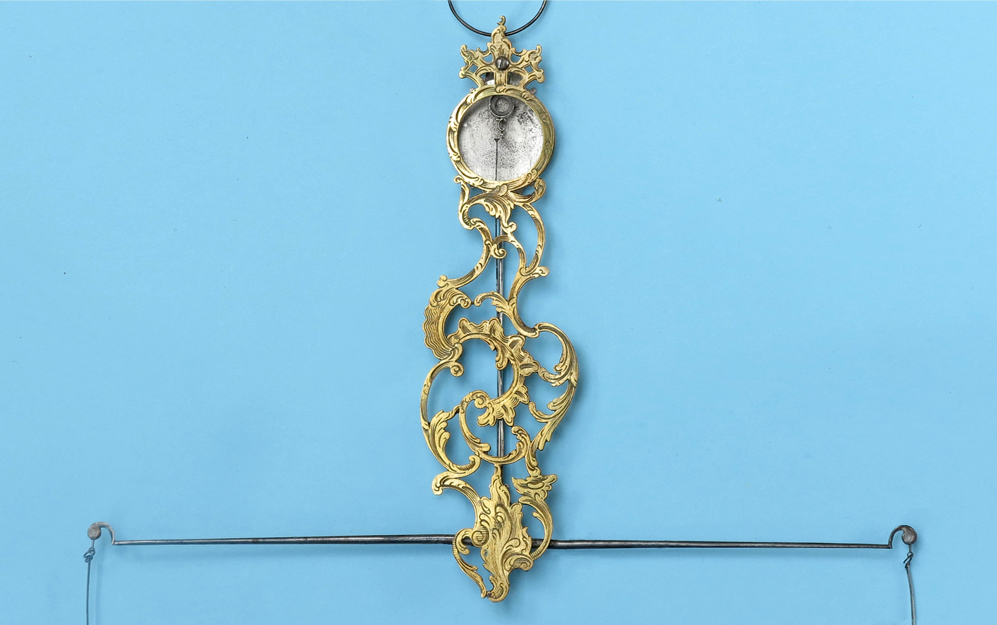
Precision scale (or grain-scale; Ger: Probierwaage) considered the forerunner of the analytical balance scale, is a specific and particularly sensitive kind of instrument used to assay small quantities of silver and gold, through a complex method called ‘cupellation’. This method is based on two consecutive and correlated weighings: the reliability of the result depends on the accuracy of the weighings and thereby, ultimately on the accuracy of the scale.
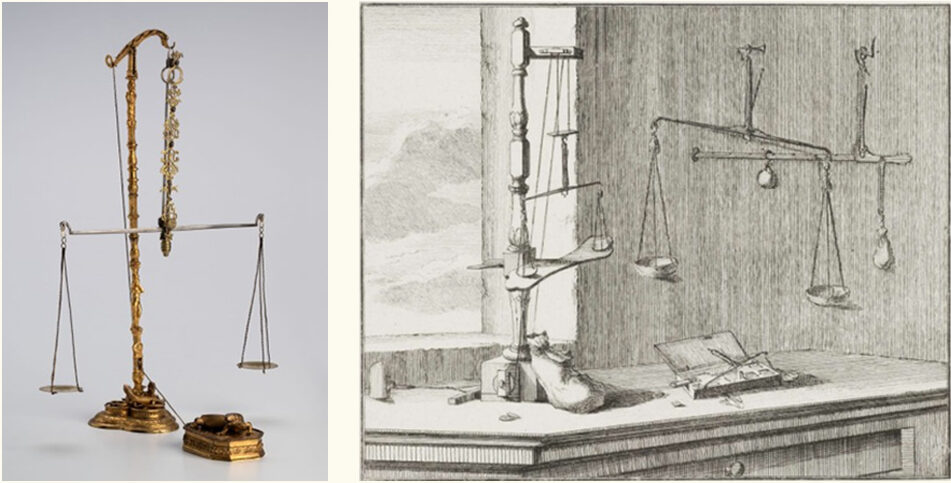
The oldest example of equal arms balance known to us has been found in the Naqada site, in Southern Egypt and dates to the Neolithic period, around 7000 years ago. The need to assay precious metals originated with the use of currency, to fight the phenomenon of counterfeiting. The first corporative laws regulating the quality of the metal and the practice of assaying and hallmarking appeared in the Middle Ages. Precision balances similar to ours have been used to perform this operation, on jewelry or other silver or gold objects, since the first half of the 16th century. These instruments became more and more refined over the centuries, together with scientific and technological progress, until the invention, by J. Hyacinth de Magellan around 1780, of a new type of precision balance with more sophisticated technical and formal features.
Precision balances for goldsmiths and those for money changers were already distinct and specialized in the 18th century: our example certainly belongs to the first category. Given the high sensitivity to stress of these instruments (even dust particles on the weighing plates can make a difference), weighing plates were suspended by means of metal thread, as in our case, or even with horsehair or platinum wires, so as to prevent dirt from adhering to the suspensions. Rarely have these elements been preserved over time: most museum-level goldsmith’s scales feature cotton, linen, or wool thread strings. Moreover, in order to guarantee the precision of the operation, the weighing took place inside small showcases, to prevent possible drafts or variations in humidity and temperature from affecting the result.
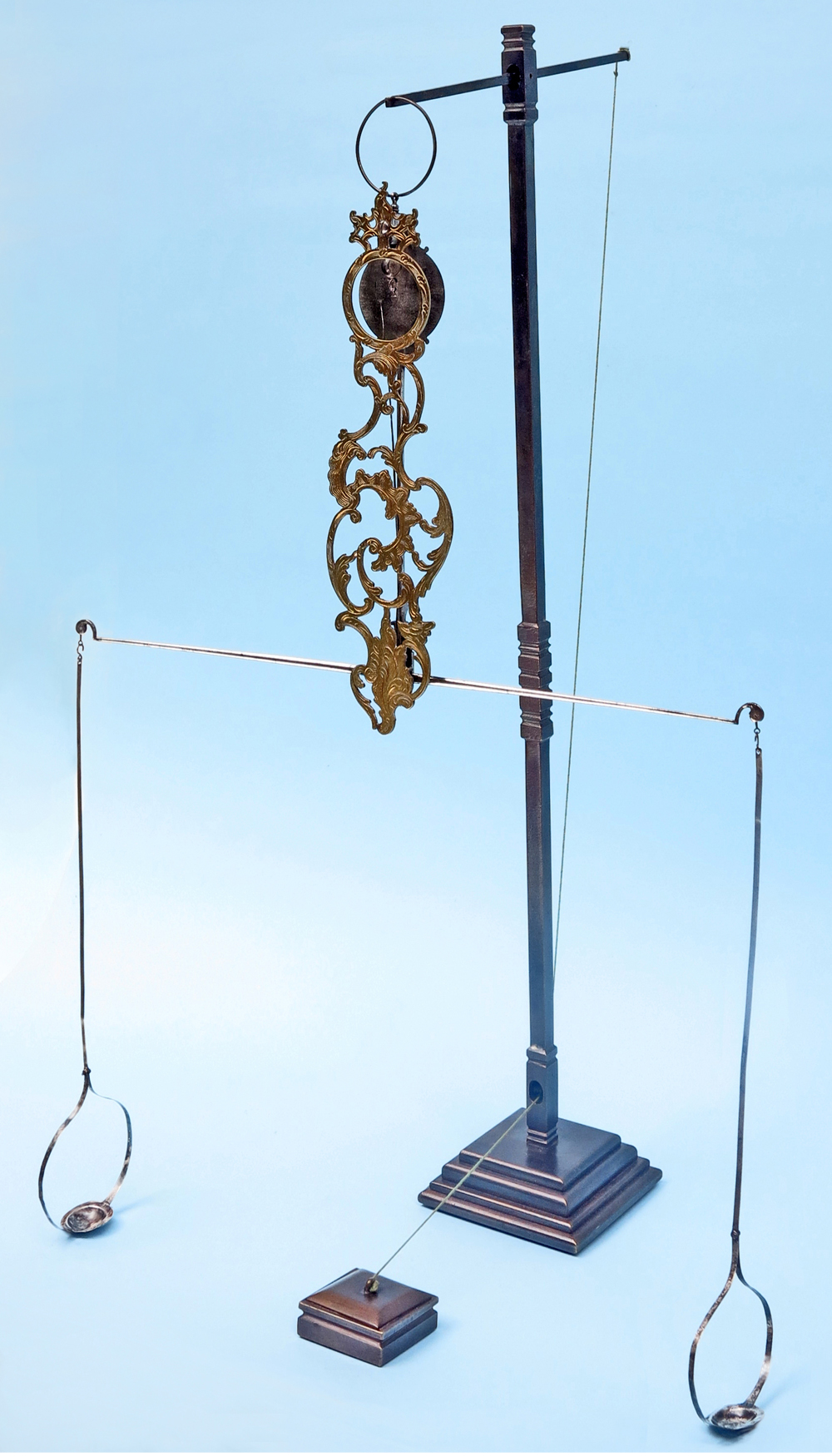
From a stylistic point of view, our example can be dated to the second quarter of the 18th century, as confirmed by the refined asymmetrical design of the plate, recalling the peaks of European decoration from the time of Louis XV.
The remarkable refinement of engravings and fretwork of the gilded brass plate, leads us to believe that it may have been made by a very fine court goldsmith: the style and the elements of the decoration are fully comparable with the highest achievements of goldworking, cabinetmaking, bronzing and quadratura of the time.
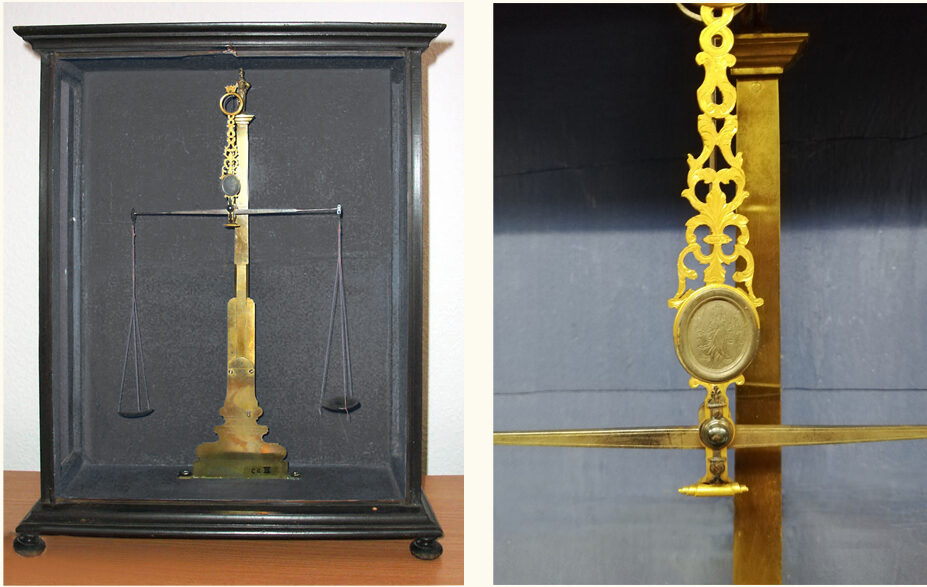
From a technical as well as formal point of view, our scale finds direct correspondences with other scales manufactured in the Saxon area between Dresden, Leipzig or Freiberg; this last city is well known for an intense activity of silver extraction documented over the centuries. A very similar scale to the one presented here, but less articulated in the plate, is preserved at the Stadtgeschichtliches Museum in Leipzig; another example belongs to the collections of the Landesmuseum Württemberg, in Stuttgart.
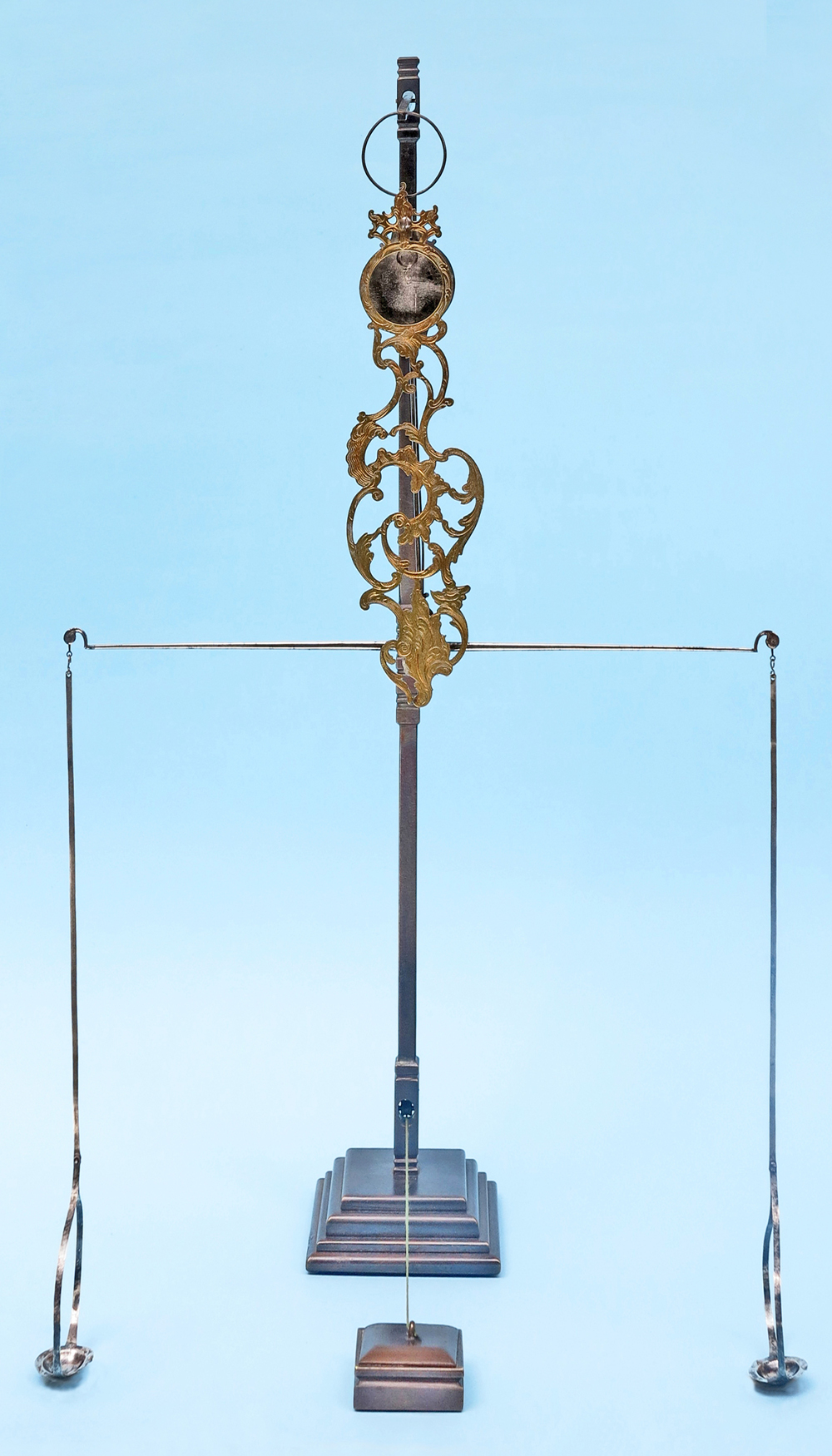
Precision Goldsmith Scale
Pierced, engraved and gilded brass; drawn and embossed silver.
Saxony (Germany)
1740-1750
Cm 21,5 x 37h.
© 2013 – 2023 cesatiecesati.com | Please do not reproduce without our expressed written consent
Alessandro Cesati, Via San Giovanni sul Muro, 3 – 20121 Milano – P.IVA: IT06833070151